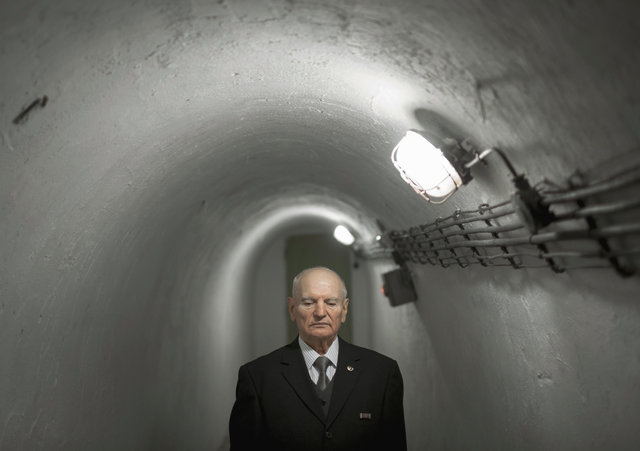
Bácskai Endre a Sziklakórház folyosóján. 1956-ban 20 éves volt, több találat érte az 1956-os események során, lábát majdnem amputálták. A külvilágtól elzárt börtönkórházból megszöktették. / Endre Bacskai is seen in the corridor of an underground military hospital set up in the caves of the Castle Hill in Budapest. At the age of 20, he was shot many times during the revolution, one of his legs almost had to be amputated. He was treated in the hospital from where he later successfully escaped.
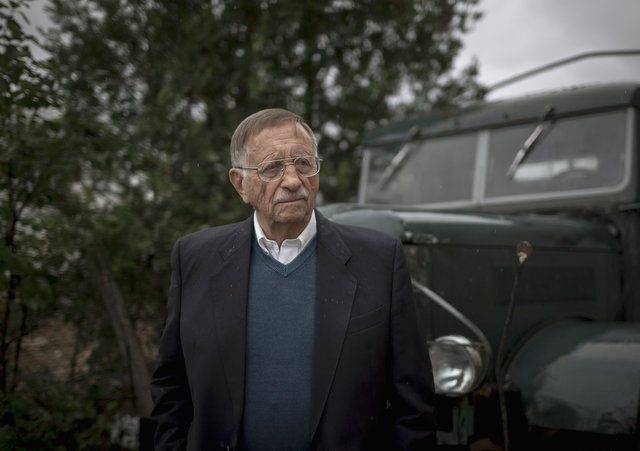
Kovács György egy régi Csepel teherautó mellett. 1956-ban 20 éves volt, vidékről Csepel teherautón szállítottak friss élelmiszert a budapesti forradalmároknak. / Gyorgy Kovacs is seen next to an old Csepel truck. At the age of 20, he was an active participant of the revolution in Debrecen, from where he helped deliver fresh food to the revolutionaries in Budapest.

Kalmár Károly a Köztársaság téren. 16 évesen gyártott Molotov-koktélokat és jelen volt a legvéresebb csatánál is az egykori Magyar Dolgozók Pártja (MDP) székházának elesténél. / Karoly Kalmar is seen on the Republic Square. At the age of 16, he manufactured Molotov cocktails during one of the bloodiest battle of the revolution, the one which saw the fall of the ruling communist party’s headquarters on the Republic Square.

Nemes György egy klinika udvarán. 19 évesen orvostanhallgatóként segített a sérülteknek. A környéken folyó intenzív harcok miatt ideiglenesen a kórház udvarán temették a halottakat. / Gyorgy Nemes is seen in the courtyard of a hospital. At the age of 19, he helped the wounded as a medical student at the former Baross Street surgical clinic. Due to the intense fighting nearby, they temporarily buried dead revolutionaries in the hospital courtyard.
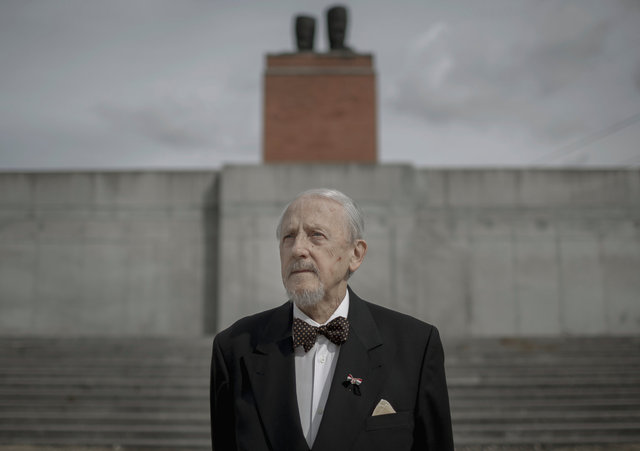
Brányik Ottó a Sztálin-szobor maradványának másolata előtt. 23 évesen katonaként részt vett az 1956-os eseményekben, később 3 hónap börtönre ítélték. A mai napig őrzi a ledöntött szobor egyik darabját. / Otto Branyik is seen in front of a piece of the toppled and smashed giant statue of former Soviet dictator Joseph Stalin. At the age of 23, he took part in the 1956 events as a soldier, for which he was later sentenced to three months in prison. He still preserves a piece of the toppled statue.
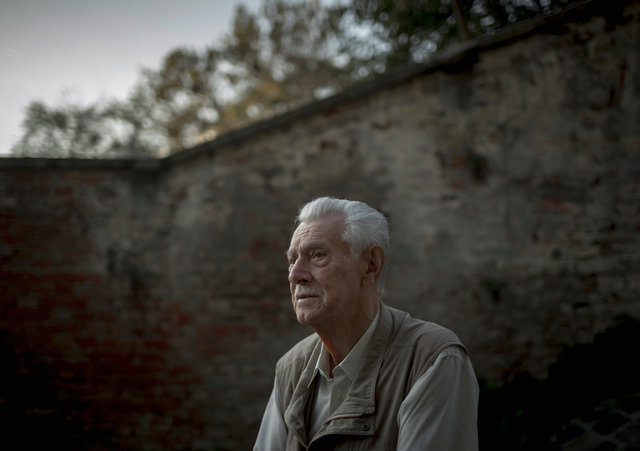
Kocsis Iván egy egykori csónakház fala mellett a főváros melletti Vácon. 25 évesen egy ifjúsági szervezet vezetőjeként harcolt, majd a harckocsik bevonulásakor egy csónakháznál rejtették el fegyvereiket. / Ivan Kocsis is seen in front of a former boathouse in Vác. At the age of 25, he fought as a leader of a youth organization; after the Soviet invasion, he and his comrades hid their weapons at a boathouse.

Lehr György áll Petőfi Sándor szobra előtt. 13 évesen végig aktív fegyveres résztvevője volt a forradalomnak, jelen volt a szobornál az egyik legelső eseménynél, amikor a nemzeti zászlókból kivágták a Rákosi-címert. / Gyorgy Lehr is seen on the March 15 Square, Budapest. At the age of 13, he was an armed participant of the revolution. He was also present at the demonstration held at the Petofi statue, where the communist symbol was cut out from the national flag.

Kovács Gábor egy régi mentőautóban. 20 évesen mentőápolóként dolgozott az 1956-os események során. A forradalom helyszínein folyamatosan sebesülteket mentett és a Markó utcai ideiglenes pincekórházba szállították őket. / Gabor Kovacs sits in an old ambulance car. At the age of 20, he worked as a paramedic assistant during the 1956 events. He continuously saved wounded persons from different sites and transported them to the temporary emergency hospital in Marko Street.
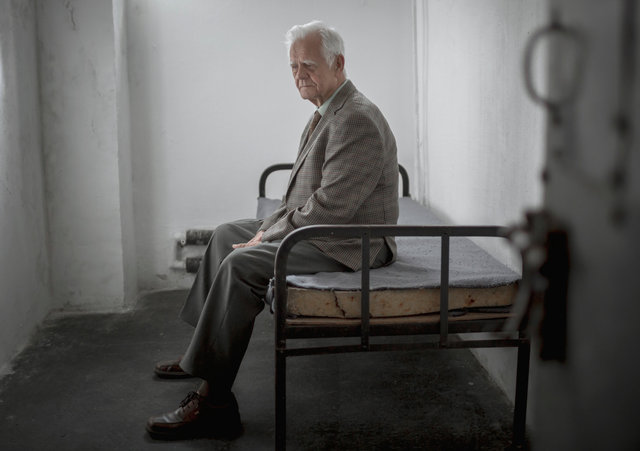
Válóczy István a Kozma utcai Budapesti Fegyház és Börtön (lehet elég annyi, hogy egy börtön!) egyik cellájában. Az 1956-os eseményeket követően, 24 éves korában koholt vádak alapján életfogytiglani börtönbüntetésre ítélték. Végül 1963-ban amnesztiával szabadult. / Istvan Valoczy sits in a cell of a prison in Budapest. After the events of 1956, at the age of 24, he was sentenced to life imprisonment on the basis of fabricated charges. He was later released as part of an amnesty in 1963.
